Sexual Reproductive Health & the Internet
janvier 29, 2019
Abortion and family planning remain taboo topics in many parts of India, with the Lancet Global Health journal estimating that India underreports almost 15 million abortions in a year. The same research showed that 78% (12.3 million) of these abortions were undertaken outside of health facilities, with Indian women participating in unofficial and likely unsafe procedures.
As part of designing a longer-term campaign that champions respect and dignity for women seeking SRH services, Purpose conducted a two-week long research in partnership with Quilt.AI, a research and behavior change platform, to understand the levels of awareness and services sought related to abortion and family planning in Patna and peri-urban Patna.
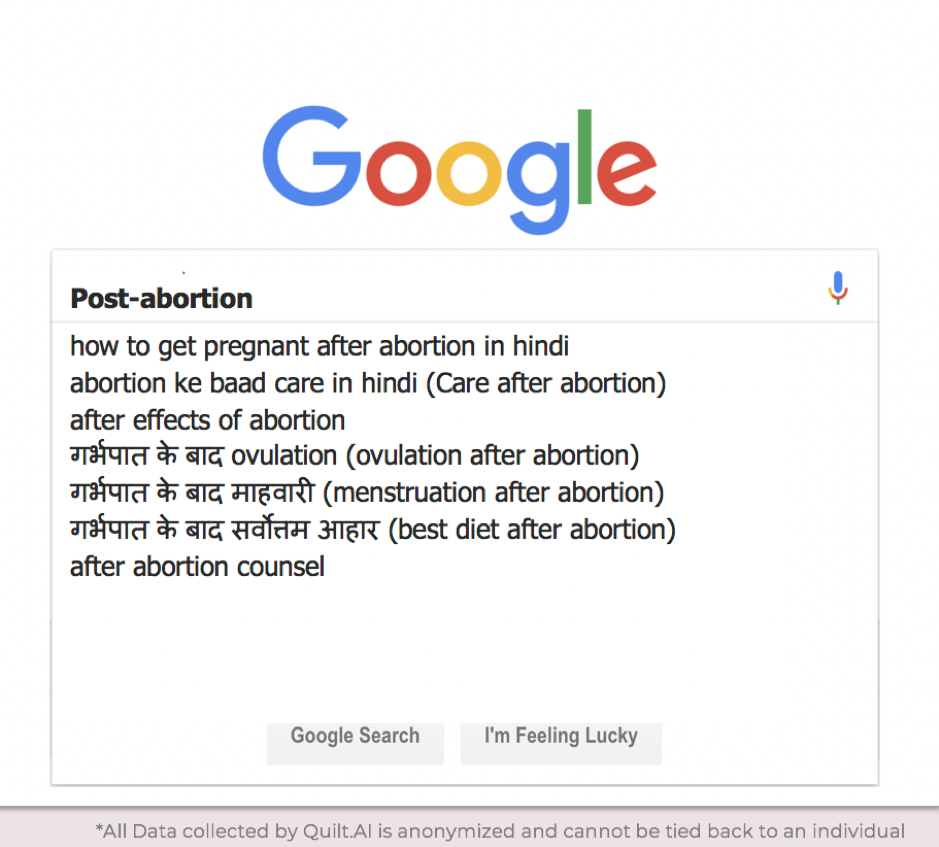
Using available big data and Quilt.AI’s proprietary digital tools, more than 50,000 data points were analyzed to understand male and female attitudes towards SRH topics. Here’s what we found:
- Women of all ages, regardless of age had a keen interest in understanding abortion at a basic level
- Older males (above 25) are the key seekers of abortion pills
- Home abortions are sought for discretion and privacy, but also for its non-invasive, ‘natural’, and herbal associations
- Males and females under the age of 25 are the key seekers of basic contraceptive knowledge (eg. “how to prevent pregnancy”), whereas males and females over 25 are the key seekers of contraception goods and services (eg. “where to buy emergency pill”.
- 1/6th of all family planning-related Google searches in Patna are about emergency contraception
- There is nascent interest and curiosity about permanent methods of birth control for women
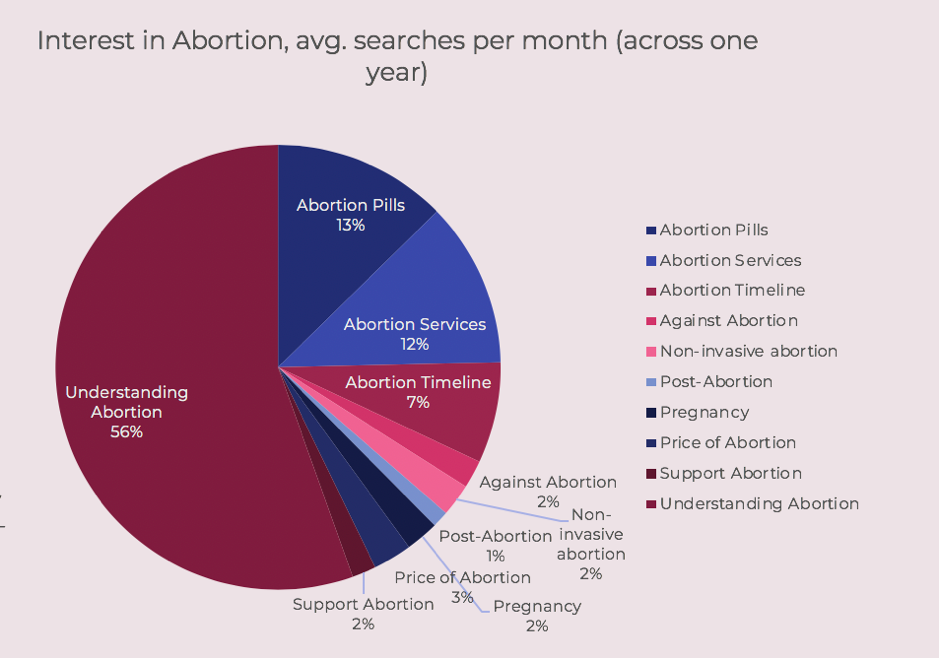
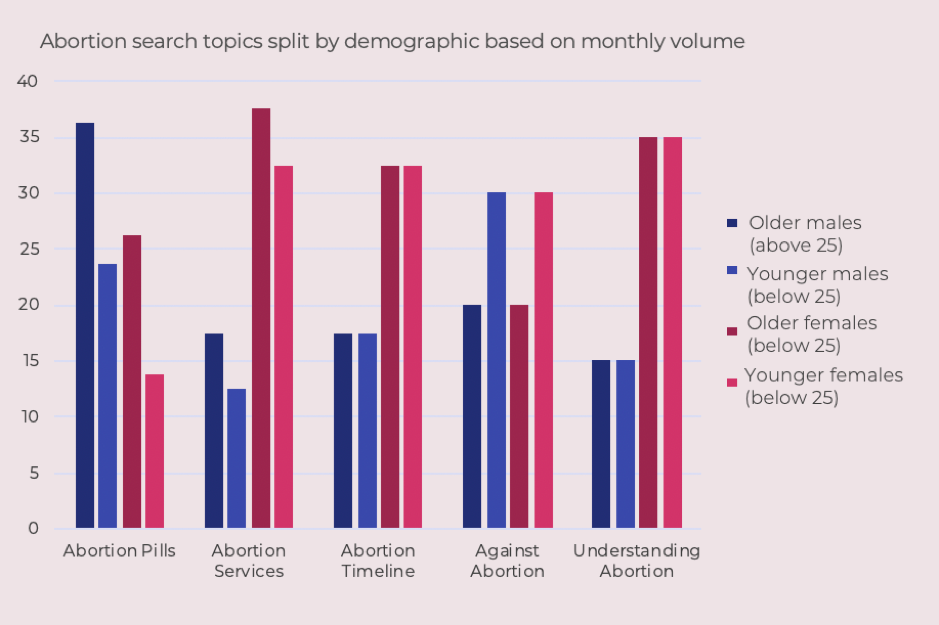
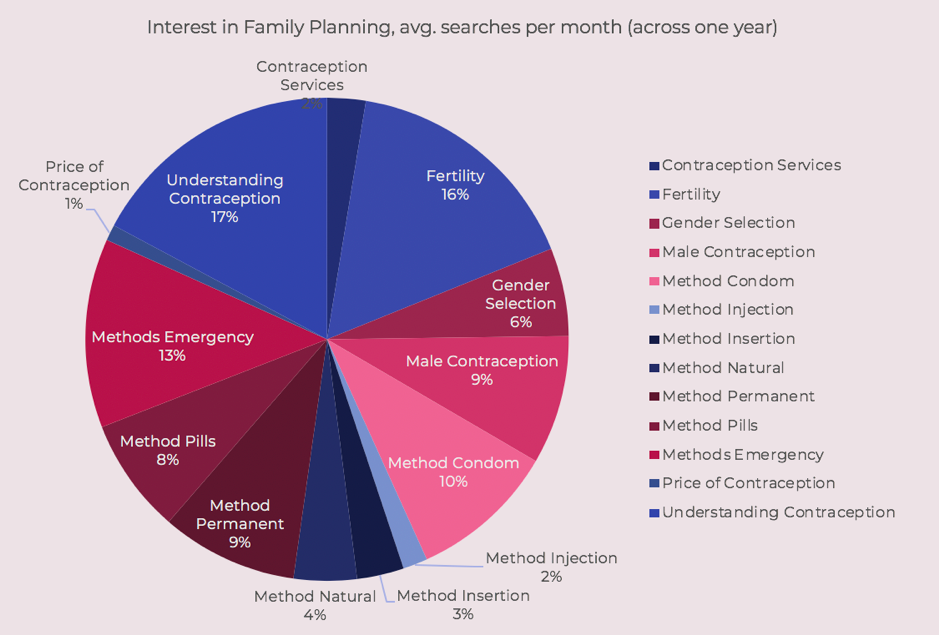
As part of understanding the larger discourse, Patna-based SRH influencers and their content were compared to the wider North India urban SRH influencers, to understand communication need gaps.
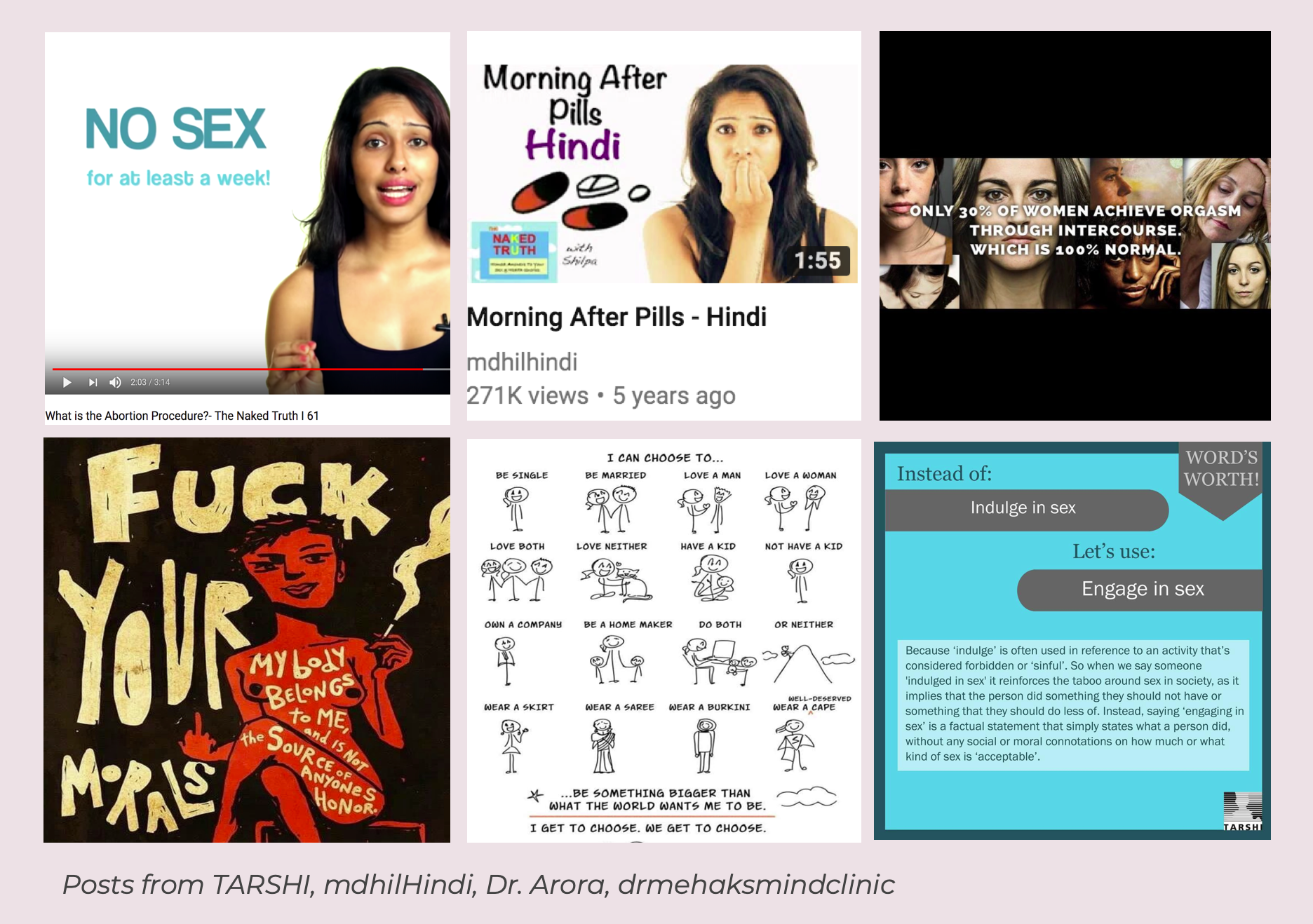
The primary insight here was that Patna-based SRH influencers tend to be male medical professionals, highlighting the need for the voice of female influencers. Currently, Patna-based content is medical-based and caters to a general population, revealing a gap in content that caters specifically to females. Lastly, there is a need Hindi-language content that includes infographics, memes, or humour that appeal to the Patna women’s sensibilities, that would make content more accessible to them.
Along with an audience profiling to understand which demographic to focus on, we also found that women actively sought to understand how to report bad doctors, access doctor reviews, as well as doctors to watch out for.
Triangulating the insights, content and communication need gaps, and service needs, became an effective first step in informing Purpose’s campaign design. As we navigate sensitive topics in the field of SRH, digital data analytics provides new and innovative avenues that allow us to deepen our understanding of large audiences, in a faster and non-invasive manner.
This research will play a pivotal role in giving Purpose the insights into developing a campaign in Patna that will address the challenges of SRH services in the city and beyond. The next phase of this work will include a co-creation workshop that Purpose is leading in Patna through which a campaign plan will be developed. Ultimately the goal of the campaign will be to improve SRH services by empowering women to demand better care.
for Equity & Evidence